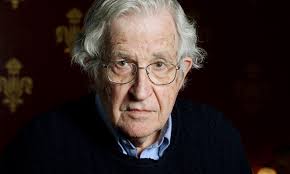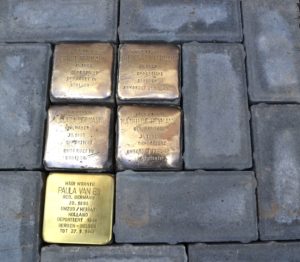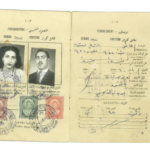Chomsky: Trump’s Actions On Syria Reflect The Foreign Policy Of A Con Man
 Donald Trump’s handling of U.S. foreign policy with Syria has baffled and angered both the diplomatic and military establishments in the United States. Nonetheless, he continues to maintain power as “an effective con man who has a good sense of what animates his voting base,” Noam Chomsky argues in the exclusive interview for Truthout that follows.
Donald Trump’s handling of U.S. foreign policy with Syria has baffled and angered both the diplomatic and military establishments in the United States. Nonetheless, he continues to maintain power as “an effective con man who has a good sense of what animates his voting base,” Noam Chomsky argues in the exclusive interview for Truthout that follows.
Trump rose to power with the aid of vitriolic but disingenuous “anti-establishment” rhetoric that appealed to millions of disgruntled voters. Essentially, Trump promised to “drain the swamp” in Washington, and to advance a domestic and foreign policy agenda serving U.S. national interests and those of “average people.” However, Trumpism in practice has meant something different: rolling back the remaining tatters of liberalism on the domestic front, sharpening racist xenophobia, facilitating the rise of white nationalism and eroding longstanding global alliances that the United States formed after the end of World War II. Truthout’s C.J. Polychroniou asked Chomsky to share his thoughts on Trump’s stance toward Syria, the impeachment effort against the president and the dynamics of the 2020 election.
C.J. Polychroniou: Noam, since coming to office, Trump has shown on numerous occasions that he is not a normal foreign policy president. But can you make any sense out of his stance toward Syria?
Noam Chomsky: The first of Trump’s recent steps was to withdraw the small U.S. contingent that was a deterrent to Turkey’s expansion of its invasion of Syria and to authorize Erdoğan’s plans to extend his atrocities and ethnic cleansing of Syrian Kurds. His second step was to move U.S. troops to “secure” the oil-producing areas. The latter, apparently after he was told about the oil, is easy to understand. He has held all along that our only standing interest in the Middle East is to “secure” its oil for our own benefit. As for the first step, we can only speculate, but it seems quite likely that the motive is what guides him consistently: How will the action affect me? Trump is an effective con man who has a good sense of what animates his voting base. In this case, he presumably expected (correctly it seems) that withdrawing a few hundred troops would appeal to the sector of the population that resonates to his message that America is foolishly expending its blood and treasure to help “unworthy” people who don’t even thank us for our sacrifices on their behalf, and that Trump is the first president to stand up for the suffering American people instead of giving everything away to foreigners out of stupidity (or treachery).
It’s worth recalling that repeated polls have shown that Americans vastly overestimate the scale of foreign aid — and recommend that it be considerably higher than it actually is (putting aside what constitutes “aid”).
Much has been written and said about the betrayal of the Kurds, a U.S. ally in the war against ISIS (also known as Daesh). This isn’t, however, the first time that the U.S. has betrayed the Kurds and other former allies.
Betrayal of the Kurds has been virtually a qualification for office since Ford-Kissinger abandoned the Kurds to the mercy of Saddam Hussein when they were no longer needed. Reagan went so far as to support his friend Saddam’s chemical warfare campaign against Iraqi Kurds, seeking to shift the blame to Iran and blocking congressional efforts to respond to these hideous crimes. Clinton’s method was to provide the arms for the murderous government assault on Turkish Kurds, which killed tens of thousands, wiped out 3,500 towns and villages, and drove hundreds of thousands from their homes. (See Noam Chomsky, The New Military Humanism, Chapter 3. London: Pluto Press, 1999). Clinton’s flood of military aid increased along with the shocking crimes, as Turkey became the prime recipient of American arms (outside of Israel-Egypt, a separate category). Read more
J. Wijsman ~ Cariben in beeld – Een beeldonderzoek naar de Nederlandse Caribische eilanden vanuit Nederlands perspectief, 1634-1915
De Nederlandse Cariben zijn als Nederlandse kolonie minder aanwezig in het nationale erfgoed dan de andere voormalige kolonies, Nederlands-Indië en Suriname. De Nederlandse blik wordt gevormd door beeldmateriaal uit Nederlandse collecties en archieven te analyseren. Het onderzoek in deze thesis is gedaan met uitsluitend visuele bronnen als primair bronmateriaal, wat voor het Nederlands Caribisch gebied niet eerder is gedaan. Deze thesis maakt deel uit van het overkoepelende onderzoek Traveling Caribbean Heritage. Middels een onderzoeksmethode gebaseerd op discourse analysis, waarbij het beeldmateriaal gelijk staat aan het discourse, is het beeldmateriaal onderzocht. De kunst van het kijken, een belangrijke onderzoeksmethode door Patricia Mohammed, staat centraal. Deze methode vergt het lezen van een afbeelding, zowel kwalitatief als kwantitatief, om deze vervolgens te vertalen van het visuele naar het verbale. Verder wordt gebruik gemaakt van een vergelijkingsmethode, voornamelijk tussen verschillende beeldtechnieken door de eeuwen heen. Hoe worden de Nederlandse Caribische eilanden tussen 1634-1915 weergegeven in Nederlandse visuele erfgoedcollecties, wat is gedurende deze tijd veranderd in het beeld dat gevormd is vanuit deze collecties en hoe heeft de ontwikkeling van visuele media invloed gehad op deze verandering in representatie?
In het kaartmateriaal is duidelijk alleen dat wat van koloniaal belang was voor Nederland afgebeeld. De eilanden behoorden tot het bezit van het Nederlandse rijk en waren van economisch belang binnen de slavenhandel, maar de inheemse bevolking en verschillende culturen van de eilanden waren niet zodanig van belang dat ze in beeld werden gebracht. Uit het getekende beeldmateriaal blijkt dat de Nederlandse blik op de eilanden gepaard ging met veel onbegrip en weinig kennis over het (of de) onbekende. De achttiende-eeuwse koloniale mentaliteit van othering komt naar voren, waarbij de andere mensen, andere omgeving en andere cultuur als inferieur worden beschouwd. Het gebrek aan kennis nam enigszins af door de komst van de fotografie, maar de mentaliteit van superioriteit bleef lang hangen. Wel kwam er meer variëteit in de taferelen die werden afgebeeld, dus het beeld dat vanuit Nederland werd gevormd van de Cariben werd veelal diverser. De negentiende eeuw bood een gevarieerdere en gemodereerde Nederlandse blik op de Nederlandse Caribische eilanden door de toename in ontwikkelde beeldtechnieken. De slavernij komt gedurende de drie onderzochte eeuwen niet prominent in beeld.
Citation: J. Wijsman. (2019, February). Cariben in beeld – Een beeldonderzoek naar de Nederlandse Caribische eilanden vanuit Nederlands perspectief, 1634-1915. Maatschappijgeschiedenis / History of Society. Retrieved from http://hdl.handle.net/2105/47370
Complete thesis: https://thesis.eur.nl/pub/47370
Stolpersteine Guide ~ Familie Bermann
 Karl Bermann (geboren 26.10. 1855 in Konken, gest. “etwa 1930 zu Mannheim“), verh. mit Berta geb. Herz (geboren 26.11.1857 in Ruchheim), lebte in Konken, wo er ein Handelsgeschäft betrieb. Die Eheleute bauten 1905/06 in damals bester Lage der Stadt Kusel das Anwesen Gartenstraße 8 mit Stall und Nebengebäude. Sie zogen 1906 nach Kusel. Karl und Berta Bermann hatten fünf Kinder:
Karl Bermann (geboren 26.10. 1855 in Konken, gest. “etwa 1930 zu Mannheim“), verh. mit Berta geb. Herz (geboren 26.11.1857 in Ruchheim), lebte in Konken, wo er ein Handelsgeschäft betrieb. Die Eheleute bauten 1905/06 in damals bester Lage der Stadt Kusel das Anwesen Gartenstraße 8 mit Stall und Nebengebäude. Sie zogen 1906 nach Kusel. Karl und Berta Bermann hatten fünf Kinder:
Isidor geboren 21.4.1883 in Konken, meldete sich nach dem Militärdienst am 12.11. 1919 in Kusel polizeilich zur Adresse seiner Eltern. Er verzog dann nach Kaiserslautern (gest. 1935). Seine Witwe Betty lebte im November 1938 in Ludwighafen. Zu ihr flüchtete nach dem Pogrom die Schwägerin Mathilde Heymann.
Die beiden Töchter Lore und Susi von Isidor und Betty Bermann überlebten den Holocaust in einem Kloster in Frankreich. Ihr Onkel Rudi Bermann traf sich mit ihnen im August 1945 in einer Kirche in Paris.
Mathilde Heymann geborene Bermann, geboren am 6.5.1884 in Konken, meldete sich 1912, aus Trier zuziehend, ebenfalls in das Haus Gartenstraße 8 wo sie, alleinstehend, die Dachgeschosswohnung bewohnte. Nach dem Pogrom floh sie nach Ludwigshafen zu der Witwe ihres Bruders Isidor Borg. Sie wohnten zuletzt in der Prinzegentenstraße 26, als beide am 22.10.1940 in das Lager Gurs verschleppt wurden. 1942 wurde Mathilde Heymann in das Vernichtungslager Auschwitz transportiert, sie ist dort verschollen. Luitpold, geboren 26.4.1891 in Konken wurde als Kriegsteilnehmer in Verdun schwer verwundet und verlor ein Auge. Er wohnte mit seiner Familie ebenfalls im Haus Gartenstraße 8, wo er mit seinem Bruder Ernst das Handelsgeschäft betrieb. Unter dem Druck des Anti-semitismus resignierte Luitpold und emigrierte am 18.6. 1937 in die USA zusammen mit seiner Ehefrau Erna geb. Lehmann (geboren 5.4.1897), mit Sohn Kurt (geboren 17.6.1923) und mit Tochter Ilse (geboren 1.5.1925).
Paula Bermann, verh. Van Es, geboren 9.3.1895 in Konken. Paula war mit den deutschen Truppen im ersten Weltkrieg (1914 – 1918)als Krankenschwester in Frankreich, heiratete den Holländer Conrad Van Es und zog am 17.7.1918 nach Amsterdam. Die Eheleute hatten drei Kinder: Hans, Inge und Sonja. Während der Deportation durch die Nazis sieht Paula ihren Mann im KZ Bergen-Belsen sterben. Sie öffnete sich am 21.1.1945 die Pulsadern, da sie nicht durch deutsche Hände sterben wollte. Tochter Inge überlebte im KZ Bergen-Belsen, Tochter Sonja in einem Arbeitslager und Sohn Hans versteckt bei einer christlichen Familie.
Ernst geboren 23.3.1888 in Konken, wohnte nach Kriegsteilnahme auch im Haus Gartenstraße 8, wo er mit dem Bruder Luitpold das gutgehende und angesehene Pferde- und Viehgeschäft betrieb. Ernst Bermann war verheiratet mit Clara geb. Maier (geboren 30.9.1895 in Malsch). Sie hatten miteinander drei Kinder: Gerda (geboren 18.5.21) Rudolf (geboren 10.7.1922) und Hildegard (geboren 6.1.1927). Die Kinder wurden „deutsch-patriotisch“ erzogen.
Ernst Bermann war zunächst der Meinung, das deutsche Volk lasse die Nazis nicht gewähren und ihm könne als Weltkriegsteilnehmer ohnehin nichts geschehen. Das war ein tragischer Irrtum. Nach dem Verbot des Besuchs der höheren Töchterschule für Tochter Gerda und des Progymnasiums für Sohn Rudolf 1936 schickten die Eltern die beiden Kinder in eine Handelsschule nach Frankfurt bzw. Sohn Rudolf in eine Bäckerlehre nach Heilbronn. Mit Hilfe eines Schwagers des Bruders Luitpold konnten die Bedingungen für eine Einreise in die USA erfüllt werden, so dass beide am 15.6.1938 in die USA emigrierten.
Für die Eltern und die kleine Tochter Hildegard bleiben die Bemühungen um eine Ausreise erfolglos.
In der Nacht zum 10. November 1938 wurde Ernst Bermann mit anderen jüdischen Männern für mehrere Wochen in das KZ Dachau verschleppt. Ehefrau Klara flüchtete mit der Tochter Hildegard nach dem Pogrom zu den Verwandten nach Holland. Nach der Besetzung durch deutsche Truppen wurden Ernst, Klara und Hildegard dort verhaftet und in das Lager Westerborg verschleppt. Ein letztes Lebenszeichen ist eine Postkarte im Besitz von Gerda Lautmann, geb. Bermann. Darauf steht:“ Meine Lieben, Päckchen erhalten und herzlichen Dank. Schickt keine mehr. Alles Gute und herzliche Grüße, Ernst und Klara“. Die Familie wurde dann von Westerborg in das KZ Sobibor deportiert. Dort sind die Eltern verschollen. Tochter Hildegard wurde am 21. 5. 1943 in Sobibor ermordet.
Gerda Lautmann, geb. Bermann, besuchte mit ihrem Mann 1971 für wenige Stunden ihre Geburtsstadt Kusel. Beide leben in New York.
Link: https://stolpersteine-guide.de/biografie/275/familie-bermann


